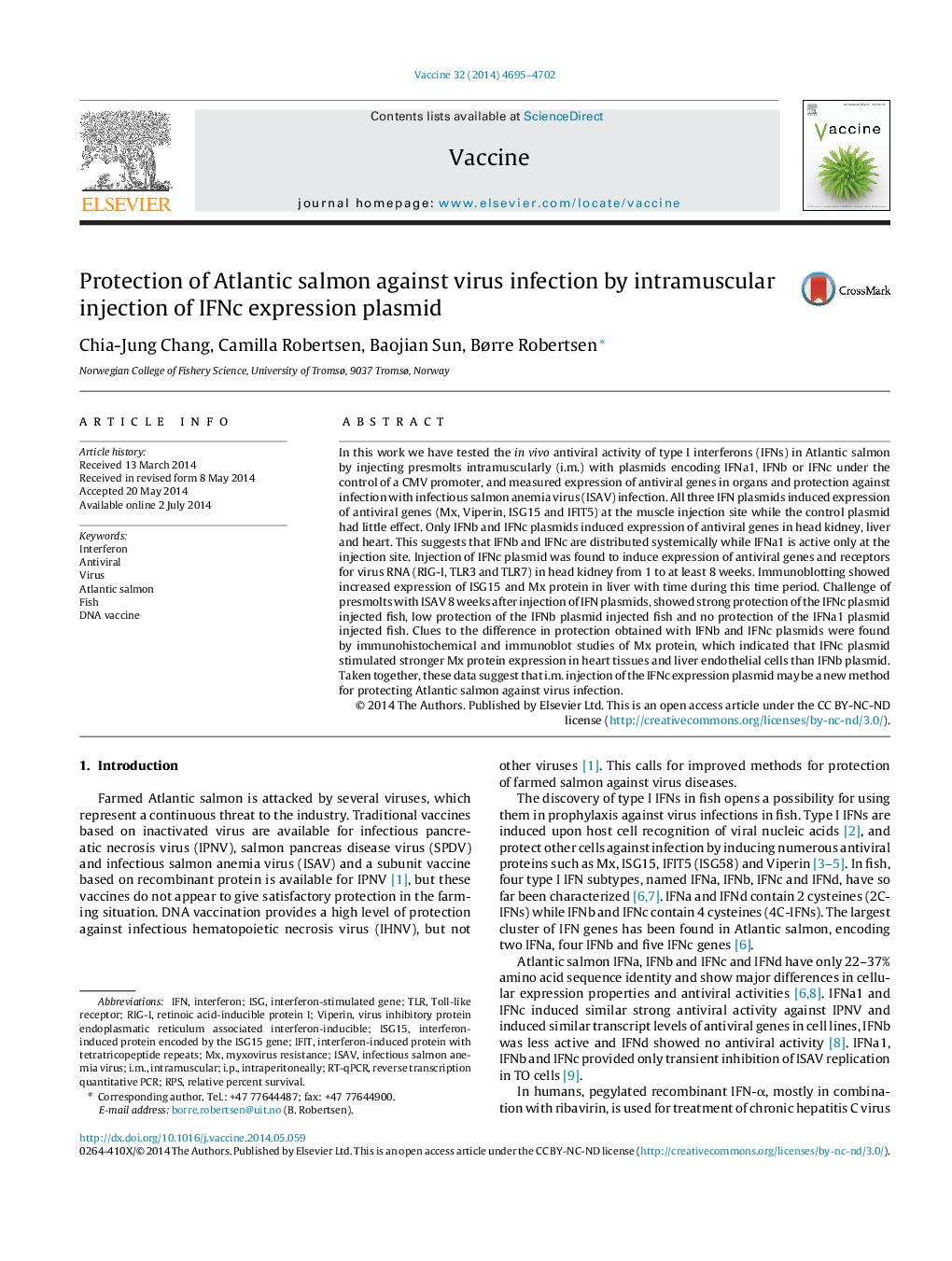| Article ID | Journal | Published Year | Pages | File Type |
|---|---|---|---|---|
| 10966106 | Vaccine | 2014 | 8 Pages |
Abstract
In this work we have tested the in vivo antiviral activity of type I interferons (IFNs) in Atlantic salmon by injecting presmolts intramuscularly (i.m.) with plasmids encoding IFNa1, IFNb or IFNc under the control of a CMV promoter, and measured expression of antiviral genes in organs and protection against infection with infectious salmon anemia virus (ISAV) infection. All three IFN plasmids induced expression of antiviral genes (Mx, Viperin, ISG15 and IFIT5) at the muscle injection site while the control plasmid had little effect. Only IFNb and IFNc plasmids induced expression of antiviral genes in head kidney, liver and heart. This suggests that IFNb and IFNc are distributed systemically while IFNa1 is active only at the injection site. Injection of IFNc plasmid was found to induce expression of antiviral genes and receptors for virus RNA (RIG-I, TLR3 and TLR7) in head kidney from 1 to at least 8 weeks. Immunoblotting showed increased expression of ISG15 and Mx protein in liver with time during this time period. Challenge of presmolts with ISAV 8 weeks after injection of IFN plasmids, showed strong protection of the IFNc plasmid injected fish, low protection of the IFNb plasmid injected fish and no protection of the IFNa1 plasmid injected fish. Clues to the difference in protection obtained with IFNb and IFNc plasmids were found by immunohistochemical and immunoblot studies of Mx protein, which indicated that IFNc plasmid stimulated stronger Mx protein expression in heart tissues and liver endothelial cells than IFNb plasmid. Taken together, these data suggest that i.m. injection of the IFNc expression plasmid may be a new method for protecting Atlantic salmon against virus infection.
Keywords
Related Topics
Life Sciences
Immunology and Microbiology
Immunology
Authors
Chia-Jung Chang, Camilla Robertsen, Baojian Sun, Børre Robertsen,
